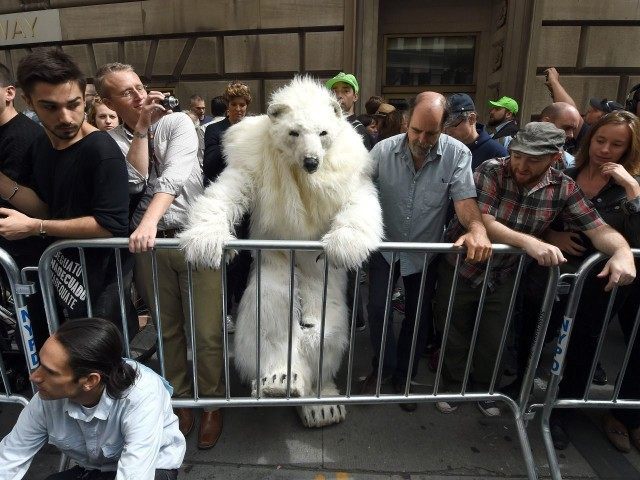Global polar bear populations are at a fifty-year record high. Yet the International Union for the Conservation of Nature (IUCN) has just released a study suggesting that they are doomed.
Which version of events should we believe?
Well that all depends on where you prefer to place your trust: on reality or on computer models concocted by activists who desperately want the polar bear to retain its status as the ursine victim of the man-made global warming apocalypse.
If you prefer to go with reality, here’s the good news from Susan Crockford, who puts the global polar bear population at a very healthy 26,000. This would mean, she has noted before, that the population has increased by around 4,200 since 2001.
Ironically, the IUCN—the world’s leading conservation monitoring body, responsible for producing the “Red List” which classifies endangered species—agrees with her estimates. What it won’t do is admit that the news is good. (Well, good if you think having lots of extra polar bears is good. I’m not so sure. I’d agree with my friend Steven Crowder that actually they are evil: one of only two species—the other being the Saltwater crocodile—which deliberately hunts down human beings as prey).
There are two main reasons for this discrepancy of opinion.
The first is that the doomsday scenario for polar bears comes, not from real-world observation but from computer-modeled predictions of what might happen in the future if the ice caps melt, etc. Like all computer models—global warming—these have little if any bearing on reality.
Unless, of course, you are the Guardian, which helpfully reports:
Latest projections indicate that swaths of the Arctic could be ice-free for five months of the year or more by mid-century. Three of the 19 sub-population groups of polar bears studied are already in decline, in Baffin Bay, Kane Basin and the Southern Beaufort Sea.
But warming temperatures could also increase diseases among the polar bear’s traditional prey, further reinforcing the negative spiral. Pollution, human encroachment, and resource exploitation such as oil drilling only add to this dynamic.
The second reason that some people argue that polar bears are doomed—even when they are obviously closer to being a verminous plague than a species in any kind of danger—is that threatened polar bears have long been one of the main pillars of the green faith.
To suggest that polar bears are in no danger—even though that is what the evidence clearly shows—would for any true-believing greenie be an act of heresy.
When a greenie tells you, against all evidence, that polar bears are “vulnerable,” it is the equivalent of Takiyah (the special rule that allows Muslims to lie to the infidel in order to further the interests of their faith).
Hence quotes like this:
“There is a high risk of extinction and the threat is serious,” said Dena Cator of the IUCN’s species survival commission. “You could consider polar bears to be a canary in the coal mine. They are an iconic and beautiful species that is extremely important to indigenous communities. But changes to their sea ice habitat are already being seen as a result of climate change.”
It’s all nonsense. But as with so many of the factoids you hear being regurgitated by environmentalists about our doomed planet, it’s not about the truth—it’s about the narrative.

COMMENTS
Please let us know if you're having issues with commenting.